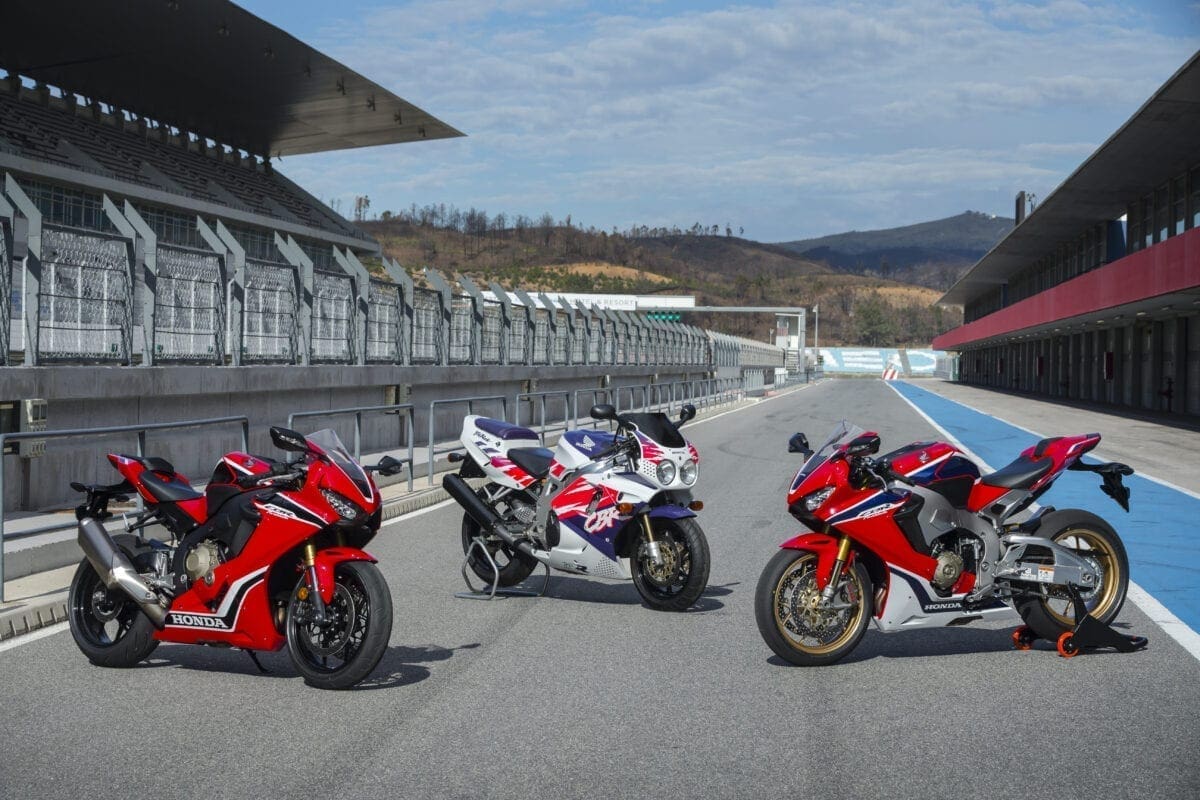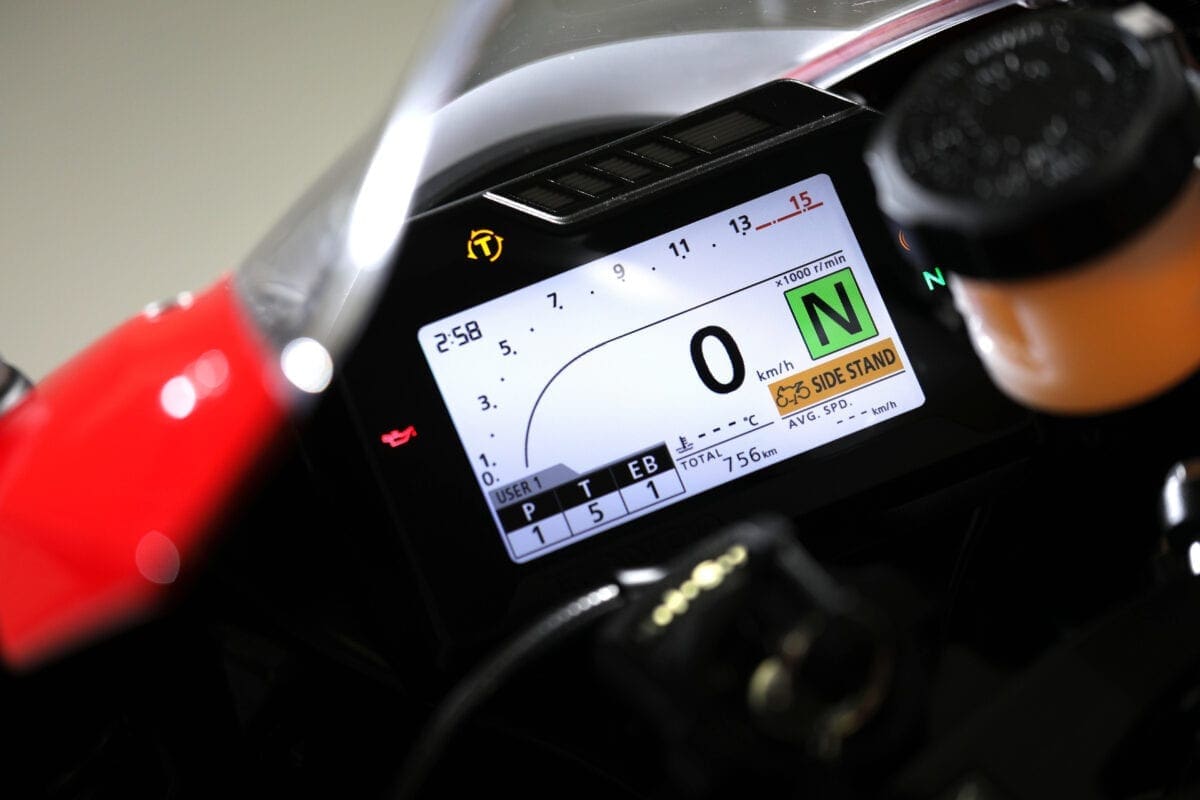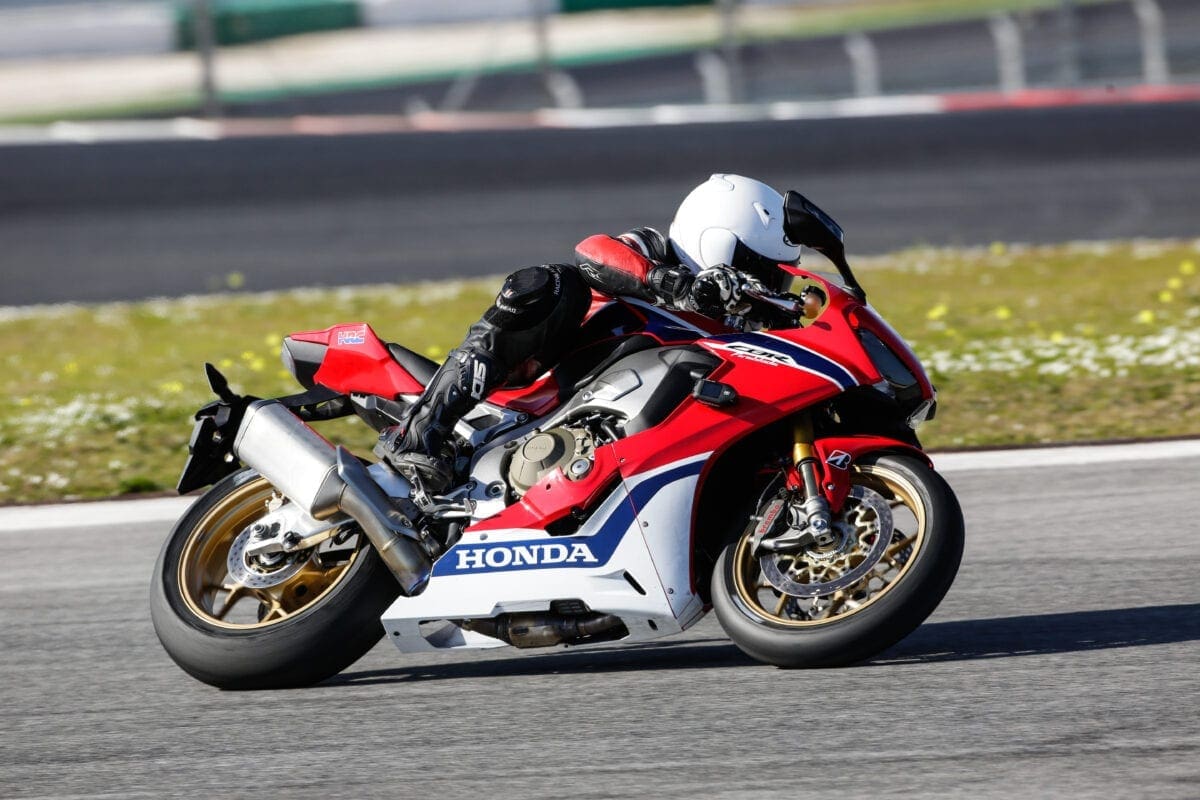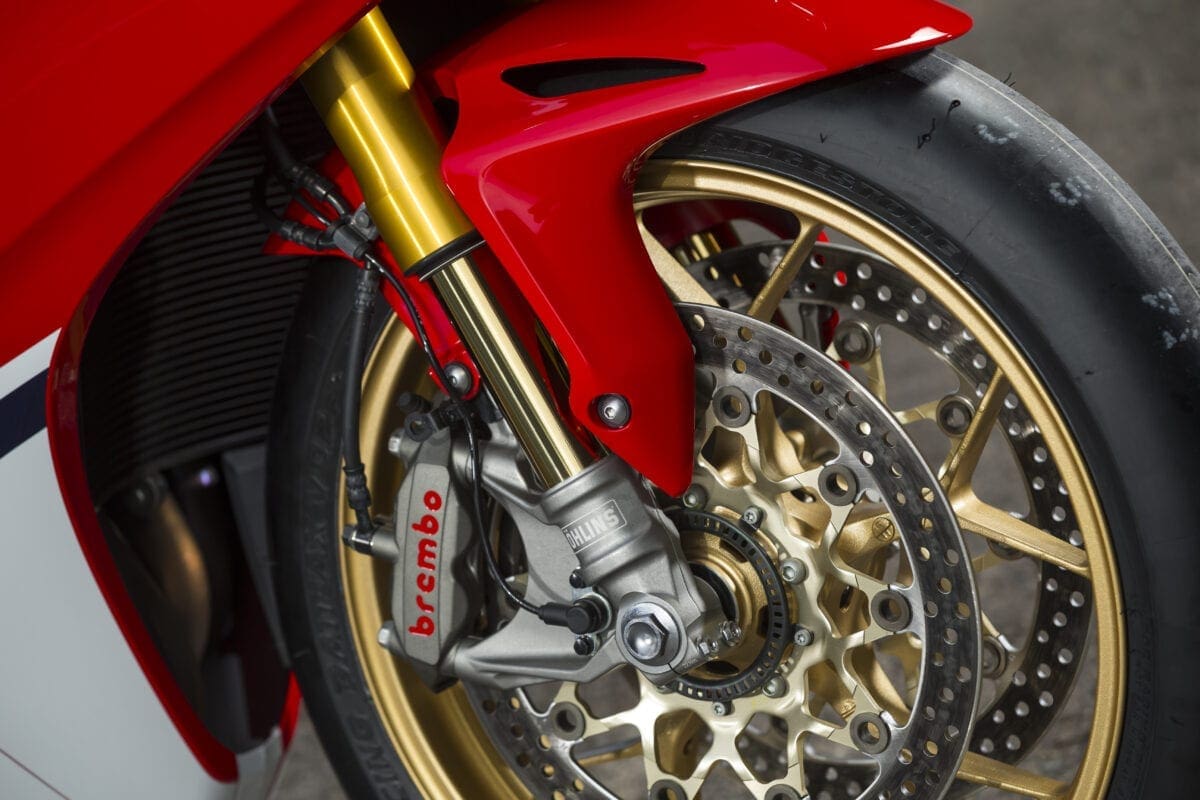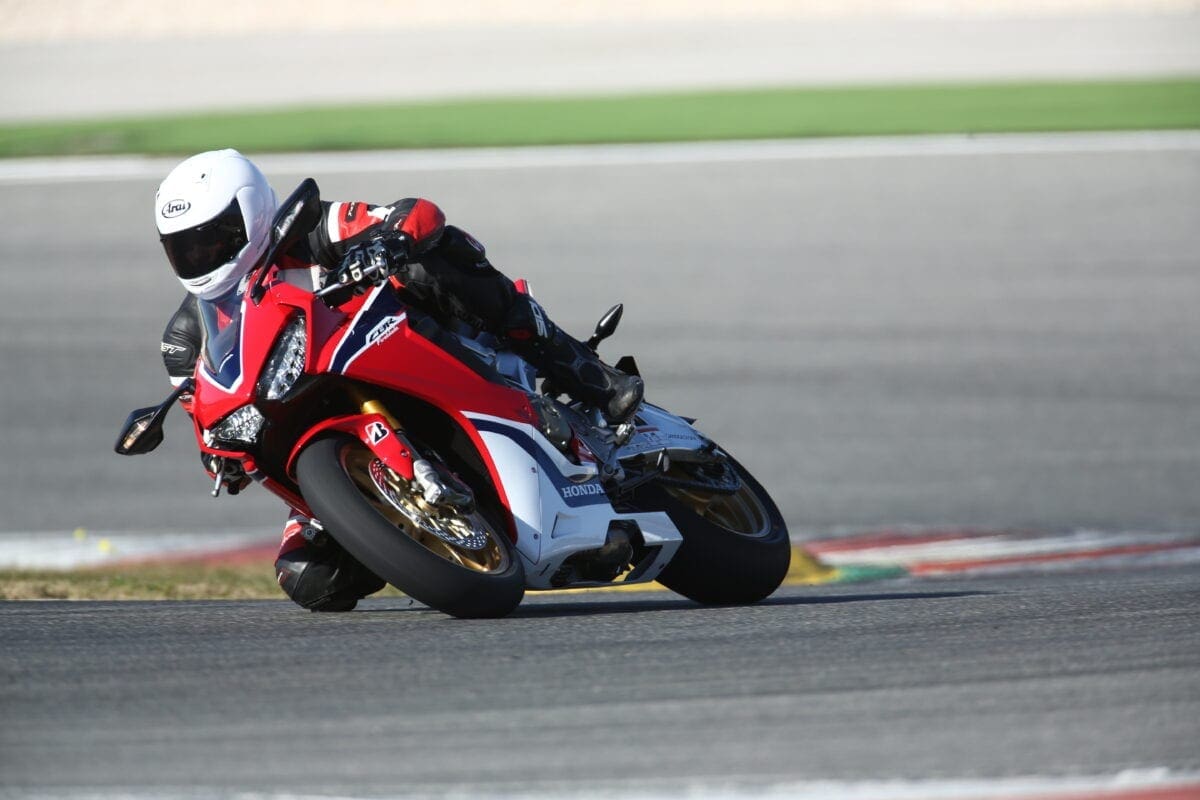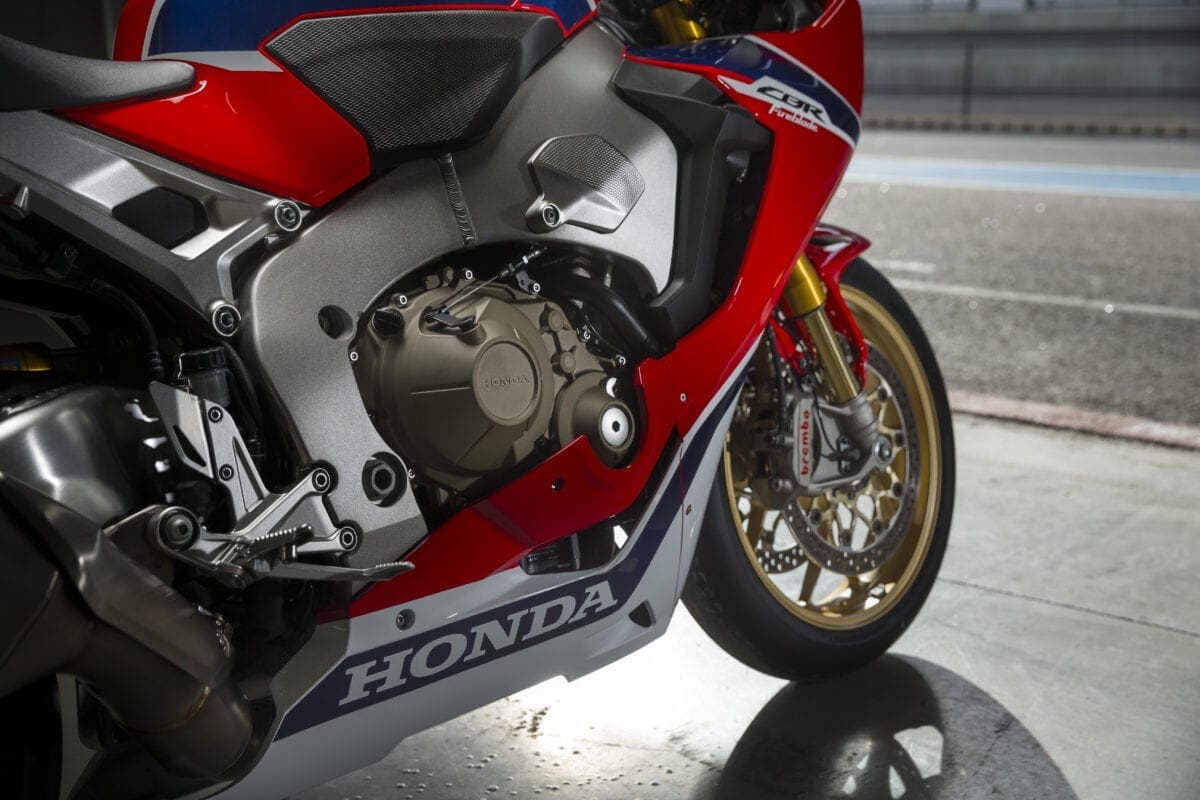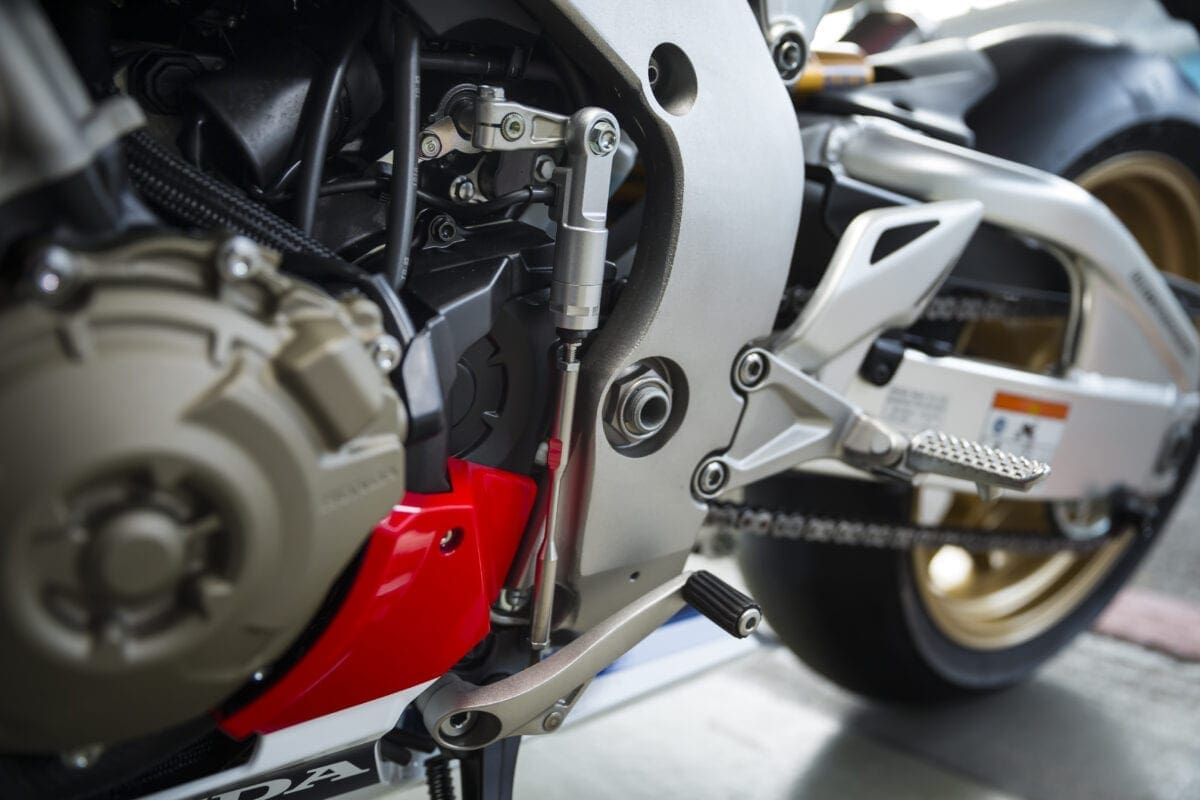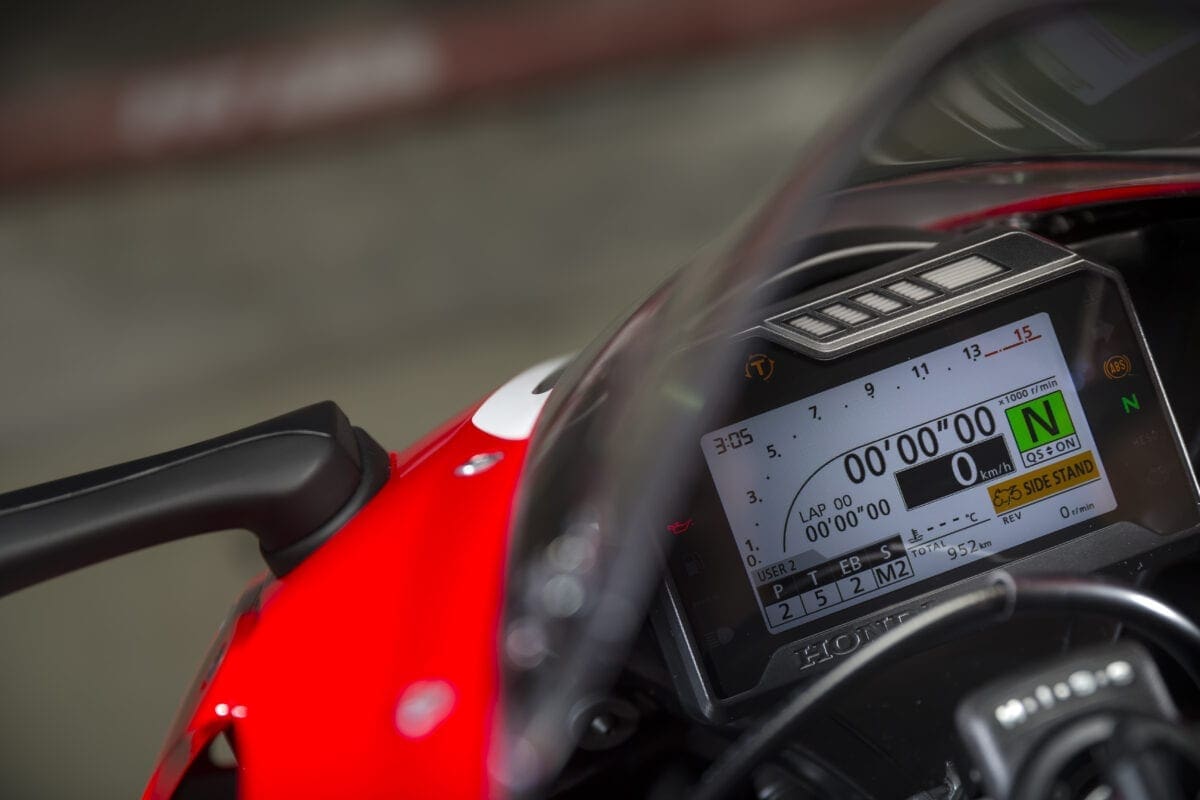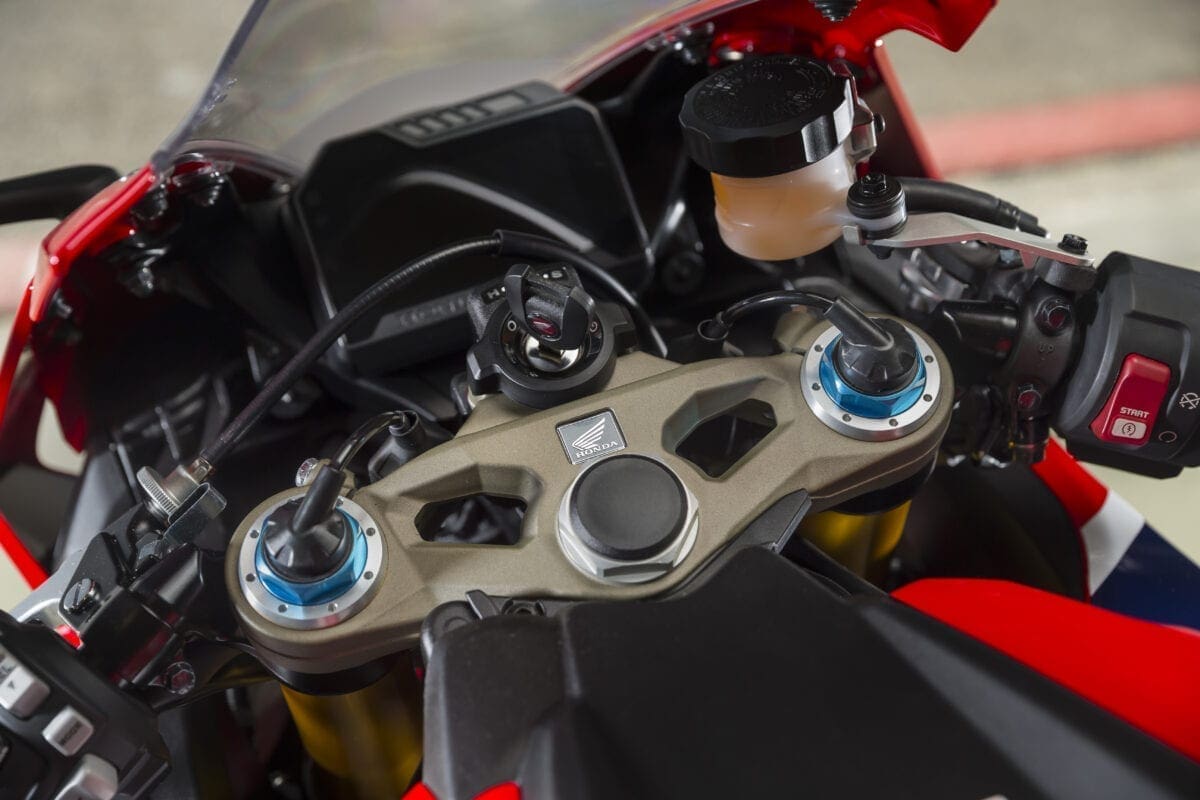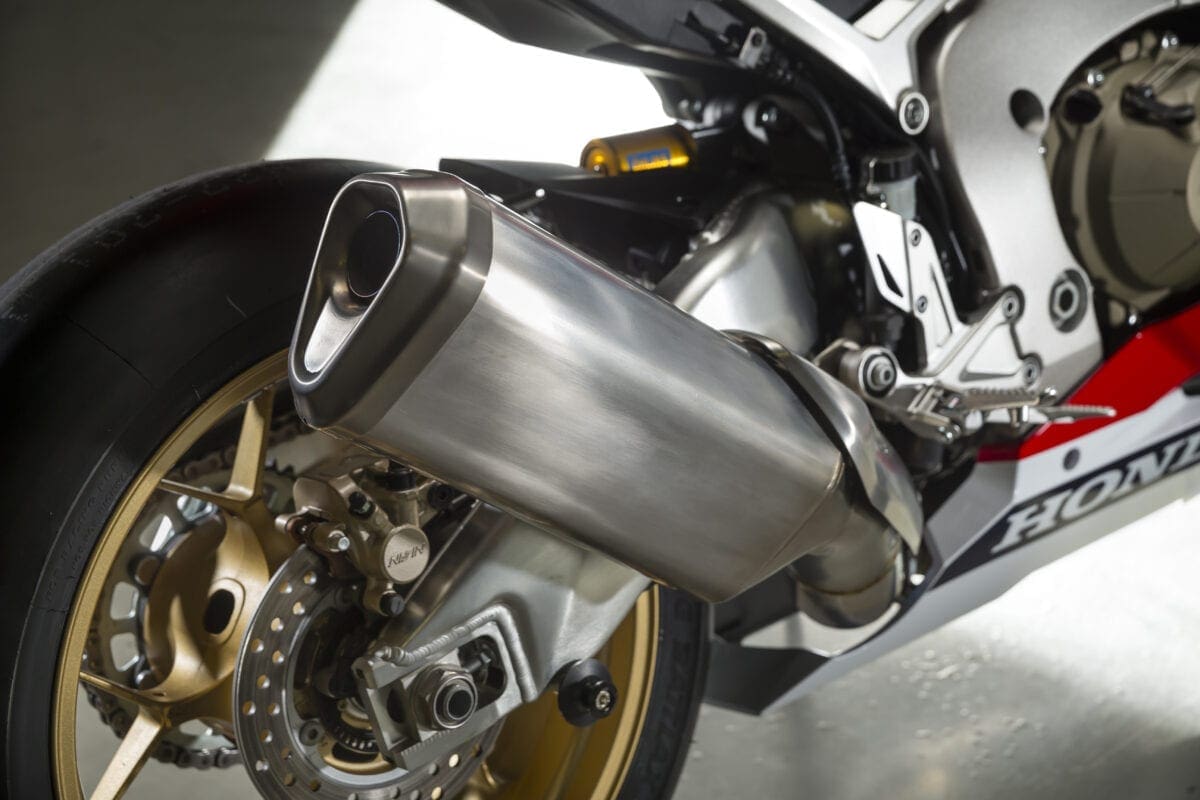WORDS: John Milbank, Editor Motorcycle Sport & Leisure magazine
PHOTOGRAPHY: Zep Gori, Francesc Montero, Felix Romero
How hard could it be? Don’t lean over too far and don’t run on; the electronics will take care of the rest, surely? APS, ABS, HESD, TBW, HSTC… so many acronyms (I counted 14) that there must be enough tech in this bike to keep even the least confident of journalists upright at the Portimao circuit.
On the day, and nervous as hell, I was surrounded by race professionals – Jenny Tinmouth, Dan Linfoot, Jason O’Halloran, Steve Plater, James Haydon, John McGuinness and Freddie Spencer. Former MSL deputy editor and endurance race champion Bruce Wilson was there too. I was out of my depth. Yet realistically, I’d expect a large proportion of these bikes to be sold to road riders like you and me, so I wanted to cut through the race hyperbole, and find out what a machine like this, bristling with the very latest electronic aids, is really like for an average road rider.
There are three models available – the CBR1000RR, the CBR1000RR SP and the CBR1000RR SP2. The top bike wasn’t at the launch, so we started the day with the RR, most easily distinguished by its black frame, before trying the SP. Both of them share the same engine and electronic rider aids that have long been awaited on the Fireblade, with the SP’s main selling point being its electronic suspension.
Run one: CBR1000RR, S21 road tyres
Scrawled across the page of my note pad in all caps after my first run was “F**K ME. IT’S AMAZING. IT’S LIKE MY CBR6 BUT LIGHTER AND FASTER. IT’S INCREDIBLE.” I’d never felt so excited after riding something as when I first stepped off the new Fireblade.
But it’s not just the scream-inducing speed on the straights that got me – it’s also so easy to ride; so easy to make yourself feel like a hero (even as you’re being lapped by John McGuinness). The RR tips naturally into corners on the Bridgestone Battlax Hypersport S21s, the Showa suspension clearly more capable than me. I’d have preferred to have got time with it on the road too – there are no potholes or cat’s eyes on Portimao – but it didn’t feel stiff or jarring like a track bike can. The racers found it a little soft, so it’s easy to see this as the ‘entry-level’ suspension when the SP boasts electronic Öhlins kit. It’s not – this is still very high-spec equipment that can be adjusted to suit your ride.
The power delivery is utterly smooth and deceptively torquey. There are no surges, and on the start / finish straight the Honda would keep driving forward – in my case to 170mph, before I had to brake for the first corner. There’s a crest as you power onto the beginning of the straight, and the bike would lift gently until I lost my bottle and closed the throttle. The wheelie control didn’t seem intrusive.
At no point did I feel cramped. I’m 5’10”, and while it was clearly a smaller machine than my 2000 model CBR600, it didn’t make my hips protest like BMW’s S1000RR. I felt safe and confident. But that diminutive size does have disadvantages – BSB rider Jason O’Halloran said that he found himself having to hold on to the bars tighter than usual due to the wind blast. This would likely be easily cured with a double-bubble screen, and we are talking about speeds way beyond anything you’d see on the road – or tracks like Cadwell – but even I found that, over 150mph, the wind on my lower legs and feet was so strong as to make it a little more difficult to change gear.
An up and down quick-shifter is standard on the SP, but an optional extra on the RR; it was fitted to our bikes, so stamping down three or four gears without touching the clutch was incredibly satisfying as the noisy titanium end-can barked. A couple of times I found the down-changes into the start / finish straight wouldn’t quite work – I wasn’t the only one, but I was able to bring the clutch in briefly to reset it. The faster-paced racers found it more of a problem. It seemed to be caused by not being positive enough with your boot, and I’m pretty sure that slightly adjusting the position of the selector would have cured it for me.
Run two: CBR1000RR, S21 road tyres
As I learned more about the track (playing it on a video game before the launch really did help!), I was getting faster and faster. Some on test had been finding the limits of the road-biased rubber, a couple getting spat out of the seat in a minor high-side. They didn’t crash. Another rider had the front push as he clipped the kerb – there’s nothing that electronics could do to save that, had things gone further.
The traction control can help stop a slide, but whack the throttle open too hard and it’ll need to work more to prevent a disaster. Ride smoothly, and the electronics can interact more gently. The best example was when I started to get a bit gung-ho over the crest just after turn eight – I’d been putting my weight over the front to stop the wheelies getting too high (there’s a fast left shortly after), but figured I’d give it a bit more gas. Bad idea – opening the throttle fast in second at the top of a hill would have been stupid on a 2016 Fireblade, and the 2017 bike had to cut the throttle quickly, bringing me down fast, before momentum could take me over the back. The wheelie control is aggressive when it needs to be.
The standard ‘street’ display of the TFT screen is very clear – I could quickly see my speed and gear position, despite there also being riding modes, revs, clock, gear indicator, temperature, date, odo, quick-shifter info, and of course the usual array of indicator lights, oil etc. There’s no fuel gauge, just a reserve light, though a display does come into action showing remaining miles once you get to reserve.
The RR uses Tokico four-piston radially-mounted calipers with a new pad material – they’re progressive and powerful, but I was starting to feel that they seemed a little weak as I braked hard for the tight left of turn 13. I was concerned I’d been dragging the front brake a little in the previous few corners, but I’d later understand – when riding the SP (which has Brembos) – that I just needed to increase the lever’s span. The system is so progressive that I wasn’t realising how hard I was braking (despite the sound of protest from the tyres), and was pulling hard enough to clip my bulky Knox Handroid gloves.
While the suspension is excellent, when braking late into corners the bike wanted to stand up a little; in future on track I’d increase the compression damping at the front to firm things up.
At £15,275, the new RR is dearer than the outgoing 2016 SP model (£14,499). The previous RR is currently £12,799, but of course no Fireblade of any spec has ever had this level of electronic control.
Run three: CBR1000RR SP, VO2 slick tyres
Our first session on the £19,125 SP was with the electronic suspension set to ‘Manual’ mode. M1 is for track, M2 for winding roads and M3 for comfort. Within these are adjustable parameters for front and rear compression and rebound, adjustable in 20 steps (in 5% intervals).
Surprisingly, I found myself wishing I was back on the RR – this was more of a track set-up, giving the firm ride that the racers wanted, but feeling a little too harsh for my road-focussed behind. But I was leaning further still, egged on by the slick tyres that aren’t OE on the SP – buyers will get the Battlax Racing Street RS10s, which have less tread than the RR’s S21s.
The Bridgestone VO2s give an increased ride height thanks to their racier profile, and have more of a curve at the edges for improved surface area at high lean, but there was none of the aggressive turn-in that I expected, and I was starting to get the ABS working as my speed, and hence braking, peaked.
Combined with the anti-lift control, the cornering ABS (which cannot be switched off) was a massive benefit to me, giving the confidence to brake as hard as possible. It meant I was scrubbing off speed earlier than necessary, and learning just how much further I could go. But racers were starting to grumble, saying it was getting the bike slightly out of shape as they entered turn one. On the road, it wouldn’t be a problem, and for racers at that level, they’d likely disable the system or bypass it altogether. For riders like me, it’s brilliant.
Is this bike worth almost four thousand pounds more than the RR? At this stage, I wasn’t sure. The suspension was impressive, but the Showa kit was still extremely good and felt more comfortable to me. The SP gains a titanium tank, but it’s hidden under plastic. The quick-shifter is worth having, but I’d buy it as an option on the RR, while the 1kg weight disadvantage wouldn’t worry me.
Run four: CBR1000RR SP, VO2 slick tyres
The final session was 45 minutes instead of 20 – a chance to try different settings on the suspension in ‘Auto’ mode. Working with data from around the bike, the system can – based on your chosen settings – make the tiniest adjustments to the damping rates as you ride, all at 100Hz. Everything can still be fine-tuned, and this ability to tweak the automatic suspension is a first for motorcycling; yet in typical Honda fashion, you still couldn’t go so far with your adjustments as to make a dangerous-handling machine.
Öhlins claims that the interface means a rider doesn’t need to understand compression and rebound to get the best from the bike, with the three auto modes (A1 – track, A2 – winding roads and A3 – comfort) having four additional parameters, each with an adjustment range of plus and minus five – ‘General’ (overall firmness); ‘Brake’ (the nose dive character); ‘Corner’ (the feeling in turns); ‘Acceleration’ (the amount of pitching). This is a clever way of describing the objective of suspension changes, and one that does work impressively.
I only had time to play with the ‘General’ feel, running the A1 mode first in standard, which wasn’t a world apart from the RR, then firmed fully to plus five. The bike felt instantly taller as I pulled out of the pit-lane, and certainly sharper and more taught. I was able to brake much harder before the weight would come off the back wheel and the Honda would start to loosen around the headstock. But it also gave a rather harsh feel to the rear (keep in mind here that I’m a road rider, so like a bit of comfort).
Next I knocked the ‘General’ adjustment down to plus three, which felt perfect at the back and still taught around the undulating Portuguese track. However, braking suffered a little, so given more time I’d have increased the ‘Brake’ adjustment somewhat.
For a rider with relatively little track experience to be able to feel and understand these adjustments so easily is a triumph on Honda’s part. And I was starting to change my mind about that price difference.
Either of these bikes would be absolutely awesome on any track; don’t for one second consider the RR as the ‘budget’ option. But with the electronic fork and shock, Öhlins has created a system that can be easily adjusted by anyone. For those with the money, this has to be the most accessible track tool ever built – for the first time in my life, I’ve started to want a litre bike for track days, moving up from the 600 I used to feel so comfortable on, and finally feeling I could go into the intermediate, or even advanced groups.
Electronics have made me a faster rider. This bike has given me the confidence to consider doing the Nürburgring, able to concentrate on the world’s most complex and dangerous circuit, without worrying so much about the bike. And I’d be quite happy to ride the Honda down there too.
Specification: Honda CBR1000RR Fireblade [SP]
Price: £15,275 [£19,125]
Engine: 999cc liquid-cooled 16valve four cylinder
Power: 189bhp (141kW) @ 13,000rpm
Torque: 84lb-ft (114Nm) @ 11,000rpm
Transmission: Six-speed, chain final drive
Chassis: Aluminium composite twin spar
Suspension: Preload, compression and rebound adjustable (F) Showa 43mm Big Piston fork; (R) Showa Balance Free Rear Cushion shock. [(F) Öhlins 43mm NIX30 Smart-EC fork; (R) Öhlins TTX36 Smart-EC shock]
Brakes: Cornering ABS (F) 2x four piston Tokico radial calipers (R) Single piston Nissin caliper [(F) 2x four piston Brembo radial calipers; (R) Single piston Nissin caliper]
Tyres: Bridgestone Battlax Hypersport S21 (F) 120/70 ZR17; (R) 190/50 ZR17 [Battlax Racing Street RS10s, but bike tested on Racing Battlax VO2 slicks]
Tank capacity: 16 litres (3.5gallons)
Seat height: 832mm [820mm]
Kerb weight: 196kg [195kg]
Contact: www.honda.co.uk/motorcycles




